When wandering around Vietnam, I always love traversing the local markets. I am fascinated by the flow of people toing and froing, the strange yet familiar sounds, the signature smells and I love to observe the quirks of native Vietnamese cultures hidden in the most simple of things.
[rpi]
A STRONG BOND BETWEEN MARKETS AND TRADITION
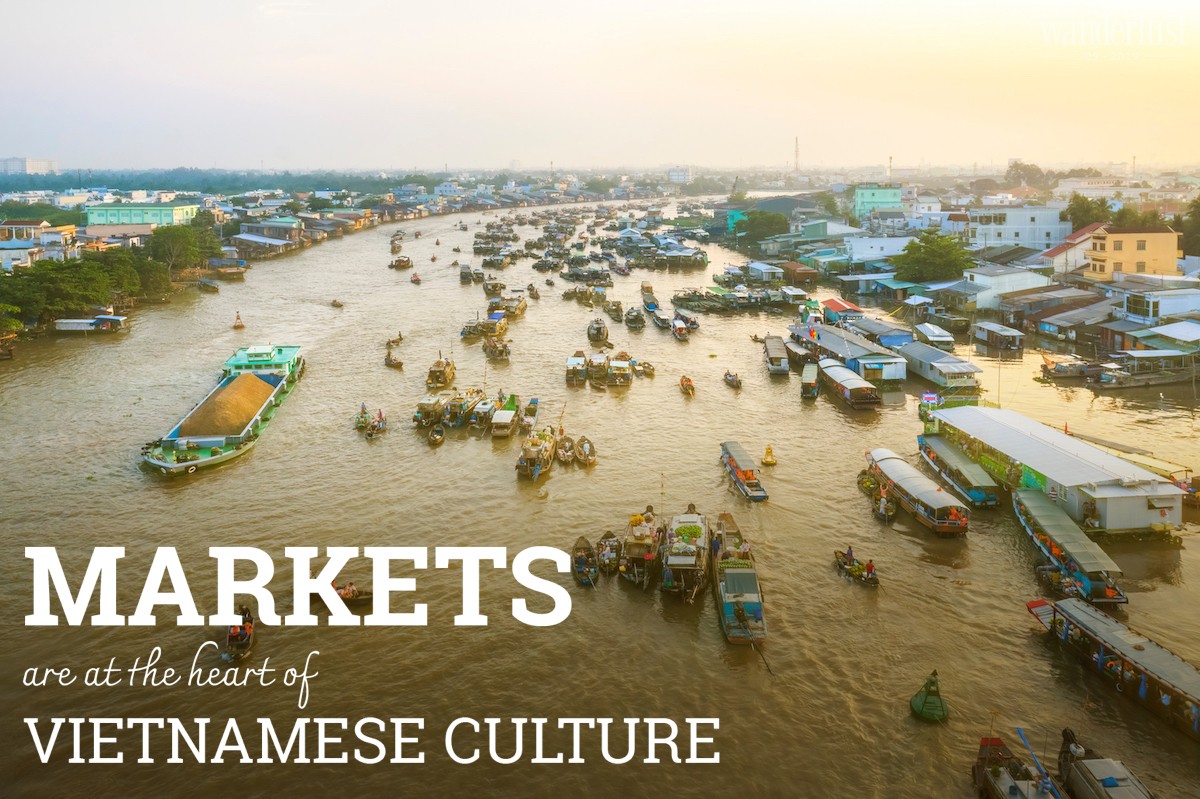 When I was a child, I always expected to receive small gifts from my mom every time she returned from the market. Sometimes, she gave me some ambarella fruits or a pack of sweet gruel made from cassava and rice flour dumplings. The markets are an important and very familiar place in the daily lives of the Vietnamese. From childhood through to adulthood, we have all visited markets at some point or another, whether that is a market in a poor village or a busy market in a vibrant city.
When I was a child, I always expected to receive small gifts from my mom every time she returned from the market. Sometimes, she gave me some ambarella fruits or a pack of sweet gruel made from cassava and rice flour dumplings. The markets are an important and very familiar place in the daily lives of the Vietnamese. From childhood through to adulthood, we have all visited markets at some point or another, whether that is a market in a poor village or a busy market in a vibrant city.
However, we do not often appreciate or value these somewhat mundane activities. Although, if we take a step back and think for a moment we begin to understand and acknowledge the importance of these day-to-day happenings. Markets are a good example of this, as there are not many scientific works or historical documents that can explain the nature and role of the market in the material and spiritual life of Vietnamese people.
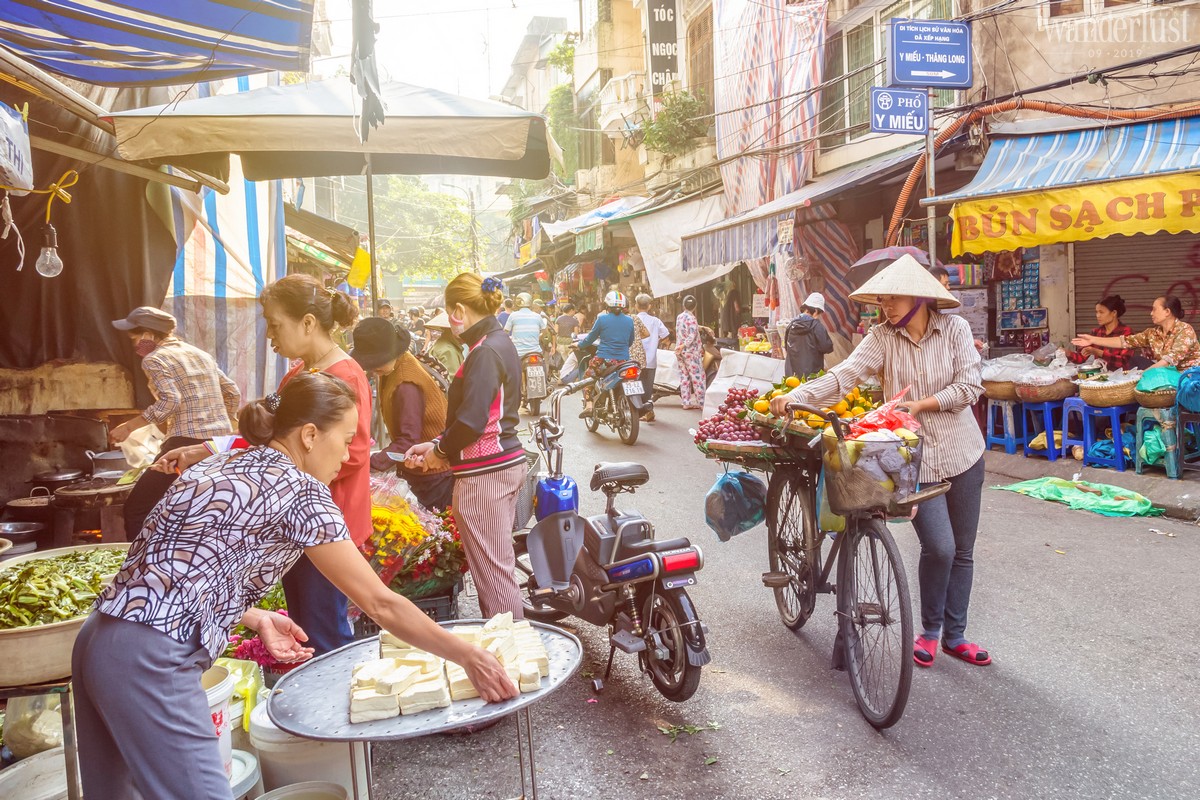 Now, if asked about the definition of a market, few people could answer assuredly. For instance, they might simply say that a market is a place to “buy or sell something”. Alternatively, you could consult academic literature for a more detailed definition, for example, “A market is an occasion of regular economic, cultural and social exchanges between localities to meet the daily needs of the people. Additionally, they have strengthened the community bond between residents from many localities in Vietnamese society for hundreds of years”.
Now, if asked about the definition of a market, few people could answer assuredly. For instance, they might simply say that a market is a place to “buy or sell something”. Alternatively, you could consult academic literature for a more detailed definition, for example, “A market is an occasion of regular economic, cultural and social exchanges between localities to meet the daily needs of the people. Additionally, they have strengthened the community bond between residents from many localities in Vietnamese society for hundreds of years”.
There is no fixed definition of a ‘market’ but the question of the chronological origin of markets is even more complex. Historical stelae and early Chinese-written documents provide unclear and generic information about the conception of markets. Kim Lu Thi Bi Ky – a stone tablet located at Chu Market, Ngoc Lu Commune, Binh Luc District, Ha Nam Province depicted that scheduled markets assembled a long time ago. With regard to the ancient Chinese-written documents, “Hong Duc Thien Chinh Thu” – a list of laws under Le – Mac dynasty, recorded an array of rules and regulations on the opening of markets. For example, newly opened markets could not be assembled on the same day as already established markets.
Furthermore, “Kien Van Tieu Luc” is a journal that includes miscellaneous stories about culture, geography, history, tradition, procedures and people written by Le Quy Don. The stories documented the commercial progress and establishment of the East gate market during the Thai Tong period of the Ly reign after the construction of Thang Long City. Overall, these historical documents often record how best to manage the markets, nevertheless, they were rather ambiguous and not particularly precise. Interestingly, markets were often discussed more after large fires or when they played host to public judicial proceedings.
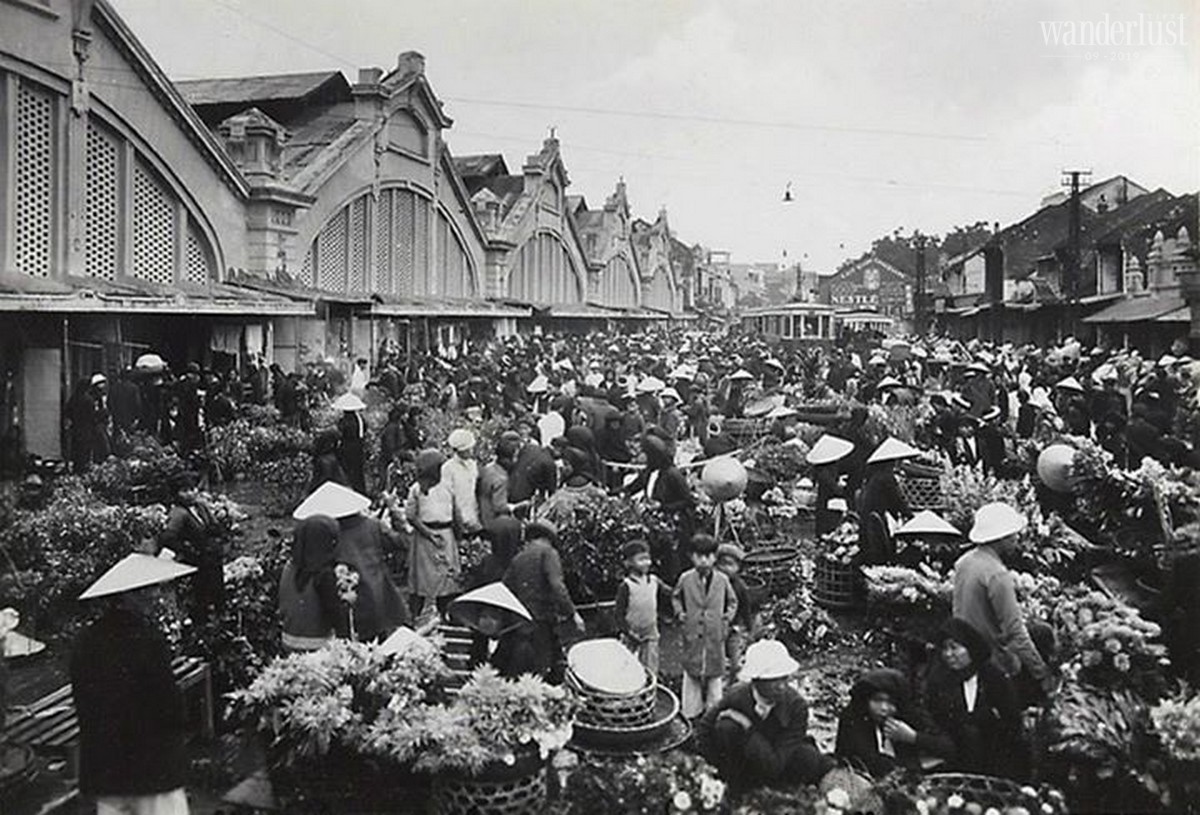
It was not until the French came to Vietnam that records of markets began to be clearer and more detailed. In an article about a rural market in the Red River Delta, P. Gourou said: “Their products are really poor; a female peasant sat in front of a basket with only a few vegetables and some fish inside. Aside from agricultural products such as fruits, vegetables and fish, there are only a very small number of market traders specializing in other specific services. For instance, there were several mechanics repairing agricultural machines and selling small knives and machetes. There were also some people selling peanut candy, dry rice pancakes, tofu and fabric.” Additionally, the colour scheme of the markets was mentioned, as most of the coverings were black or brown with only the occasional white, red or blue highlight.
It can be said that the influence of the French did not change the Vietnamese economy or the nature of the markets. In comparison with the mentioned descriptions from P. Gourou, rural markets today still maintain their former nature. The book “Song Doi Cua Cho / The life of a market” written by Nguyen Manh Tien mentioned that “Vietnamese markets have a strong bond with tradition. Markets in every form are still preservation and development of tradition”.
MARKETS ENRICH CULTURE
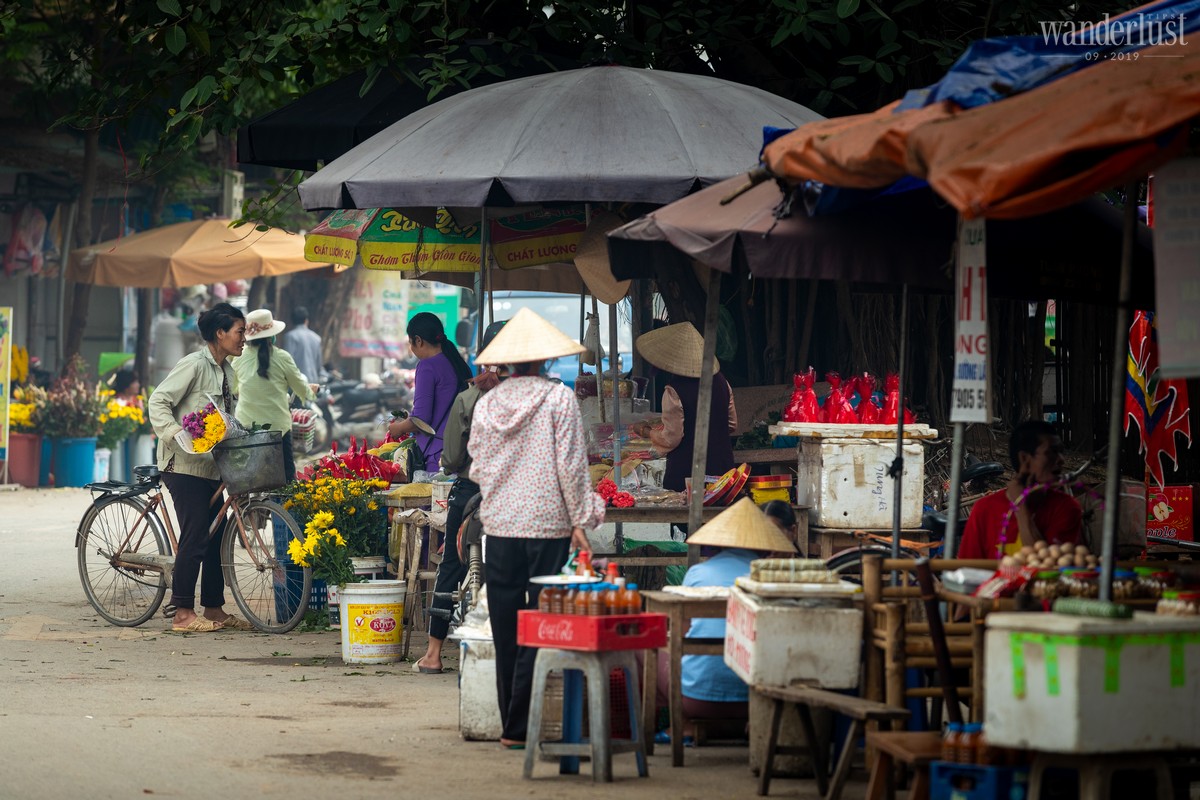
Along with communal temples and churches, markets are one of the important public spaces that make up Vietnamese culture. Up to now, there have been many different types of markets, most of which are very familiar. There are Eastern markets, Doai markets, Southern markets and Western markets. Authorities classify markets to include village markets, commune markets, district markets, and provincial markets. If classified by spatial region, there are urban markets, midland markets, mountainous markets and floating markets.
The markets usually comprise of an array of stalls arranged in an indoor or outdoor space. Sometimes, even a basket or a bicycle carrying goods can easily become a mobile market. In bigger markets, the stalls are usually divided into different zones such as meat, fruits and vegetables, fish and dried produce to make it easy for buyers to find things. For the smaller markets, the layout of the stalls is a little more haphazard and produce does not tend to be organised so militantly. You will find rice stalls next to fruit stalls and junk food stalls by the vegetables. For market newbies, they may need to wander around to find what they are looking for whereas regular visitors will know where to go for their goods.

Different from the static markets with adjacent rows of stalls, floating markets take place on the rivers. Besides Cambodia and Thailand, Vietnam is one of the most famous countries in the world for its markets. Vietnam is renowned for intertwined rivers and canals distributed mainly in the Southwest. It is undeniable that Vietnamese people are smart and deft when they take advantage of natural resources to earn a living and enrich their local culture. In the middle of a vast river area, you will find hundreds of boats full of goods, mostly fruits. The fresh, vibrant colours of fruits and vegetables stand out against the stunningly beautiful landscape and idyllic countryside.
Besides a variety of fruits such as rambutan, mangosteen and durian, you can also find shrimp, crab, fish and countless delicious local delicacies. On each boat, people usually dangle a bamboo pole with their products attached on top to show off their products to potential buyers. However, there are a few exceptions. For example, you will often see clothes hanging on the boats but they are not products for sale. Floating marketers liveaboard, thus, they hang garments from their boats. What’s more, food and drinks are often sold on the boats, though they cannot be strung up or hung. Alternatively, if you come here and see a boat draped in coconut leaves, it actually means that they want to sell their boat, not the coconut leaves.
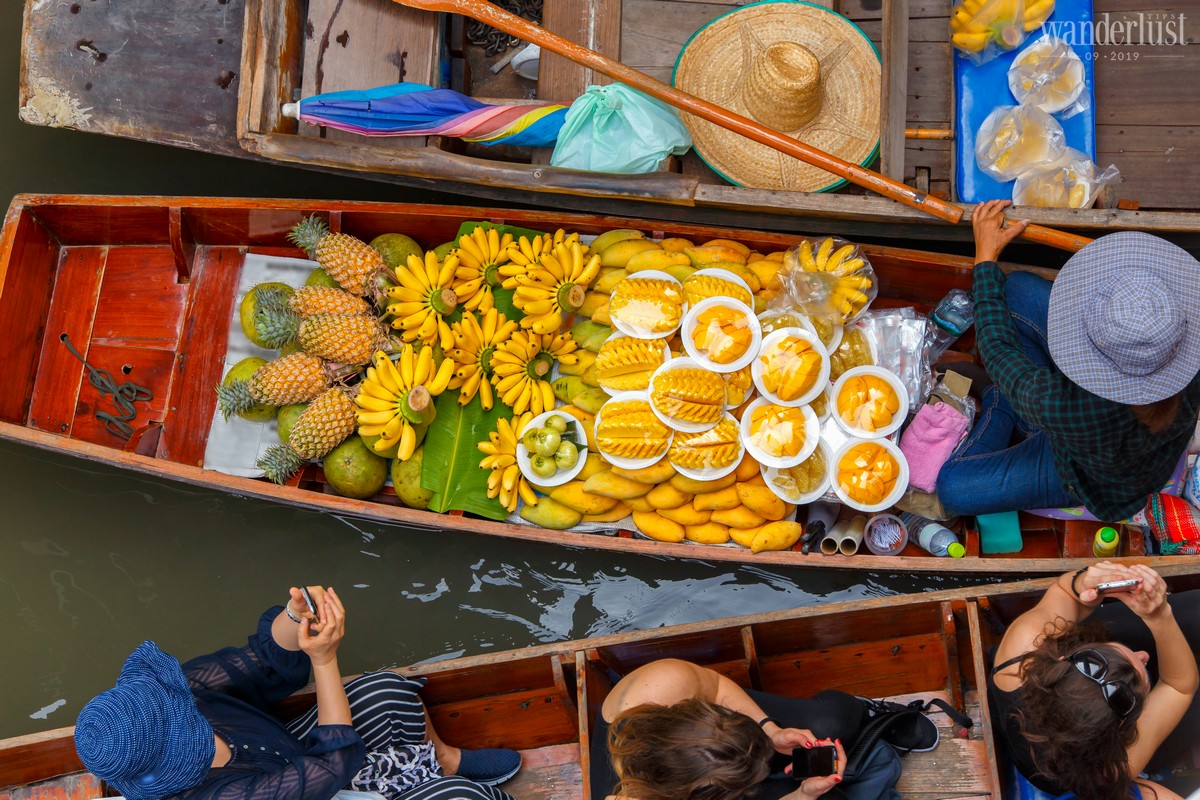
Adrift on the gentle waves, enjoying a bowl of rice noodles, sipping a cup of coffee and listening to a traditional tune whilst observing women buying and selling on the busy boats makes for an unforgettable experience. Some floating markets that you should visit when coming to the Western region are Nga Bay floating market (Hau Giang); Nga Nam floating market (Soc Trang); Cai Rang floating market (Can Tho); Cai Be floating market (Tien Giang); Long Xuyen floating market (An Giang) and Tra On floating market (Vinh Long).
If classifying according to time, there are self-established markets which are small, temporary, unstable and often assemble in a short time. Daily markets are markets which are operated every day. Morning markets, afternoon markets and night markets are assembled depending on times of the day. Weekly and monthly markets are called scheduled markets or fairs, usually lasting between three to ten days. When thinking of scheduled markets, Bac Ha fair is a must, one of the most famous and largest markets in Northwest Vietnam. The market is located on a high mountain in Bac Ha District, Lao Cai Province. Every Sunday morning, it is easy to find colourful brocade dresses in the morning sunshine. Locals carry and sell their hand-crafted products. People come to buy necessary items and others simply come to get a feel for the colourful and buzzing ambience. No matter where they come from or their reason for visiting, every person contributes to the unique culture of the market.
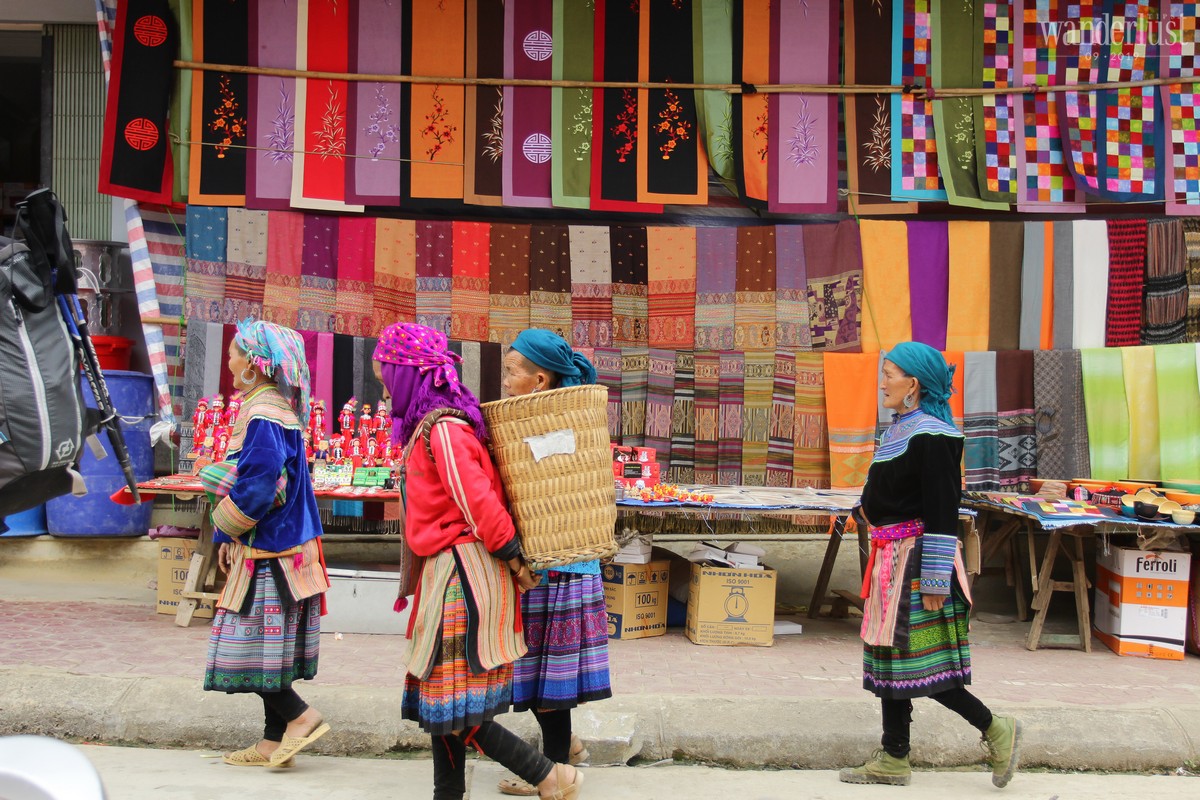
The fairs usually assemble according to specific weeks or months, but yearly markets are also popular such as New Year markets and love markets. You can visit the Sa Pa and Khau Vai love market, but Khau Vai love market is more popular. Khau Vai love market, also known as Phong Luu market has a long history spanning over 100 years. Like Bac Ha fair, Khau Vai love market is also located in the high mountainous region of Northern Vietnam, in Khau Vai Commune, Meo Vac District, Ha Giang Province.
The market only assembles once a year on the 27th of the lunar calendar. The place does not have an abundance of space for displaying many products like other markets, people mainly sell food and drinks. Khau Vai love market is a place for estranged lovers to share bygone memories. They are often couples that have once loved each other but could not get married and now lead separate lives. There is no jealousy or anger, when you come here you will only feel the warm love of life.
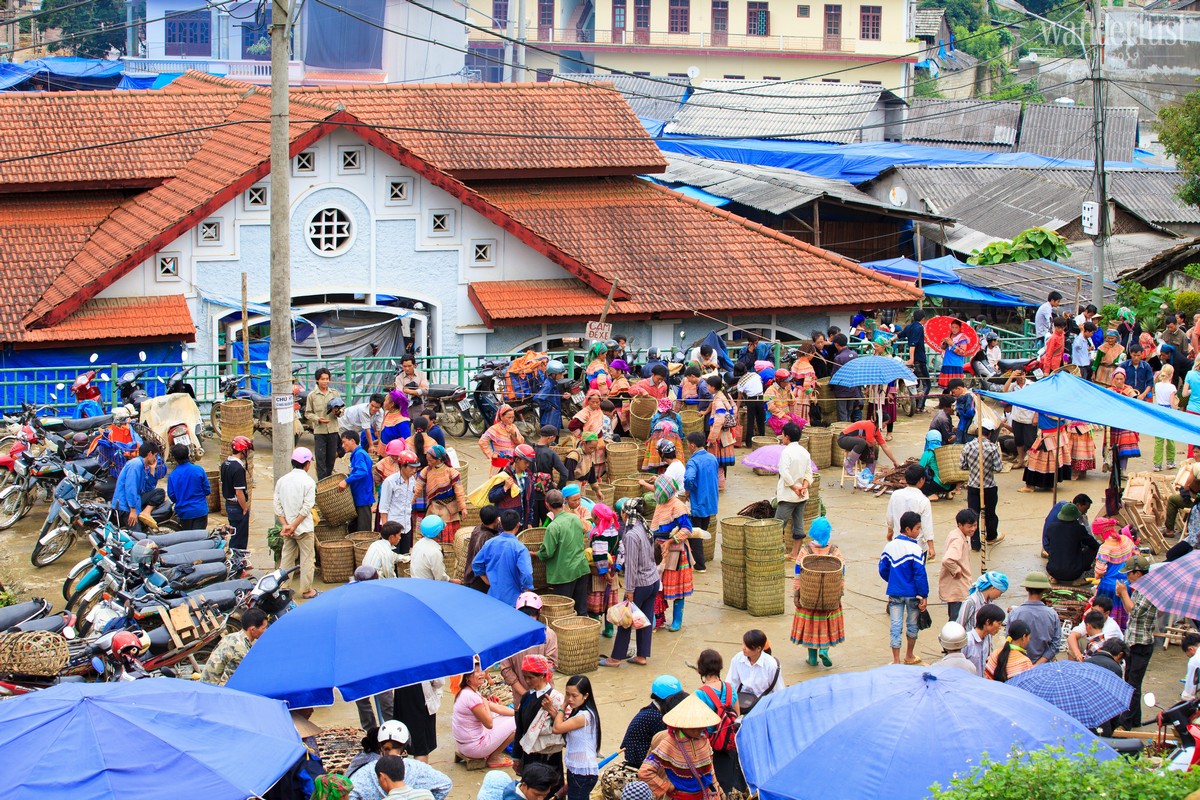
Aside from space and time, markets are categorized by many other criteria. For example, they can be classified by the scale of goods exchange, thus, there are wholesale markets, retail markets and general markets. In comparison with general markets that sell all kinds of wares, there are also markets that only sell one specific item such as flower markets, fruit markets, cloth markets or mat markets. Dinh Yen mat market in Dong Thap is the most famous mat market.
Dinh Yen is home to the famous traditional mat weaving village. The craft has existed for hundreds of years and has overcome many ups and downs throughout history. Dinh Yen is renowned for the mat market, also known as the ghost market because the market usually only assembles at night as the villagers spend daylight hours weaving mats. While the traders often sit and sell their products at a specific place in a market, Dinh Yen market is completely different. At night, under the glimmering light of the kerosene and tamanu oil lamps, buyers often find a place to wait for formats while sellers carry the mats on their shoulders through the crowds to advertise. Thus, the mats have been closely linked to the culture and life of Dinh Yen people.
MARKETS TODAY
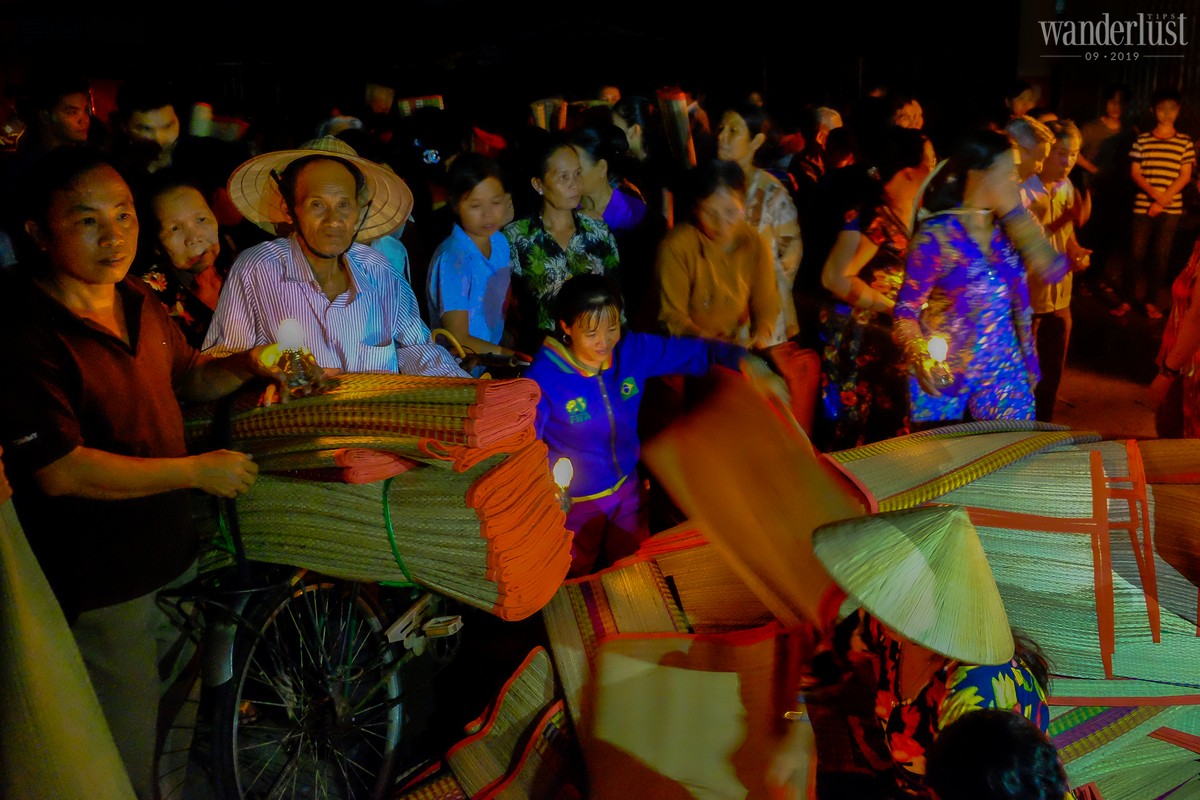
It can be seen that the Vietnamese markets are diverse, rich and colourful compared to other markets in the world. However, nowadays the variety in markets is ever developing and due to the demands of modern-day life, traditional markets are gradually being replaced. People are now more familiar with supermarkets built-in modern buildings and striking shopfronts where the products have been arranged systematically, brands are easily identifiable and prices are clearly labelled. Subsequently, more and more people are choosing to shop at the supermarkets instead of going to the markets although the prices of goods in supermarkets are somewhat more expensive than those at the markets.
Additionally, the development of e-commerce has led to the launch of online markets which sell all kinds of products that can be found in both traditional markets and supermarkets. With the world quite literally at your fingertips, you do not need to go anywhere, you can just sit at home, shop online, pop in your card details and the items will be shipped to your front door. Internet shopping is easy, convenient and saves time which is something that people want in modern life. In addition to eBay, Amazon, Tiki and Lazada, social networks like Facebook and Instagram are now popular places to shop. Supplies of goods are tantamount to the demand of consumers. The market is ever-changing in tune with our trends and desires.
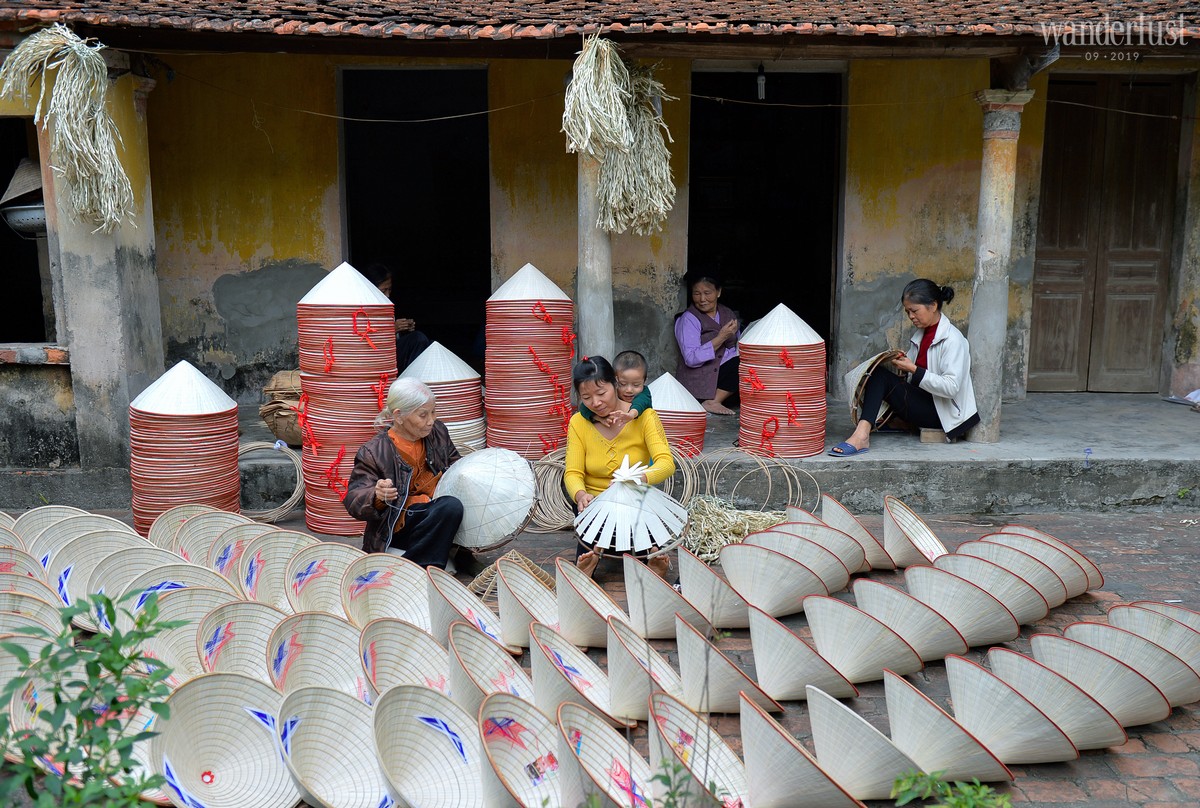
Besides the threat of “competitors”, the markets are being changed by the needs of people and the development of life and culture. Today, when arriving in Khau Vai, you will not have a chance to visit an original love market. Tourists are coming here more and more and as a result, many shops have opened. Coming to Dinh Yen mat market, you will no longer feel the bustling atmosphere of the past because people are now able to buy mats from the comfort of traders’ home. Or look at Chuong village located a stone’s throw from Hanoi, renowned for Chuong market with hat-making and hat-selling tradition. Although Chuong Market still assembles, it is not busy with traders and shoppers buying hats, instead, the traders sell the materials to make hats, and hat products are sold at home.
Even so, the market has always been an imperative part of the culture and daily life for Vietnamese people. It is easy for us to see the markets scattered around the S-shaped land including big markets across the wide streets or spontaneous markets in the small alleys. They resemble a miniature society where people not only merchandise and exchange goods but also date and share old stories of love and life. Markets are a distinctive feature that makes up the culture of the regions and have now become an attractive destination for tourists to immerse themselves in the native culture.
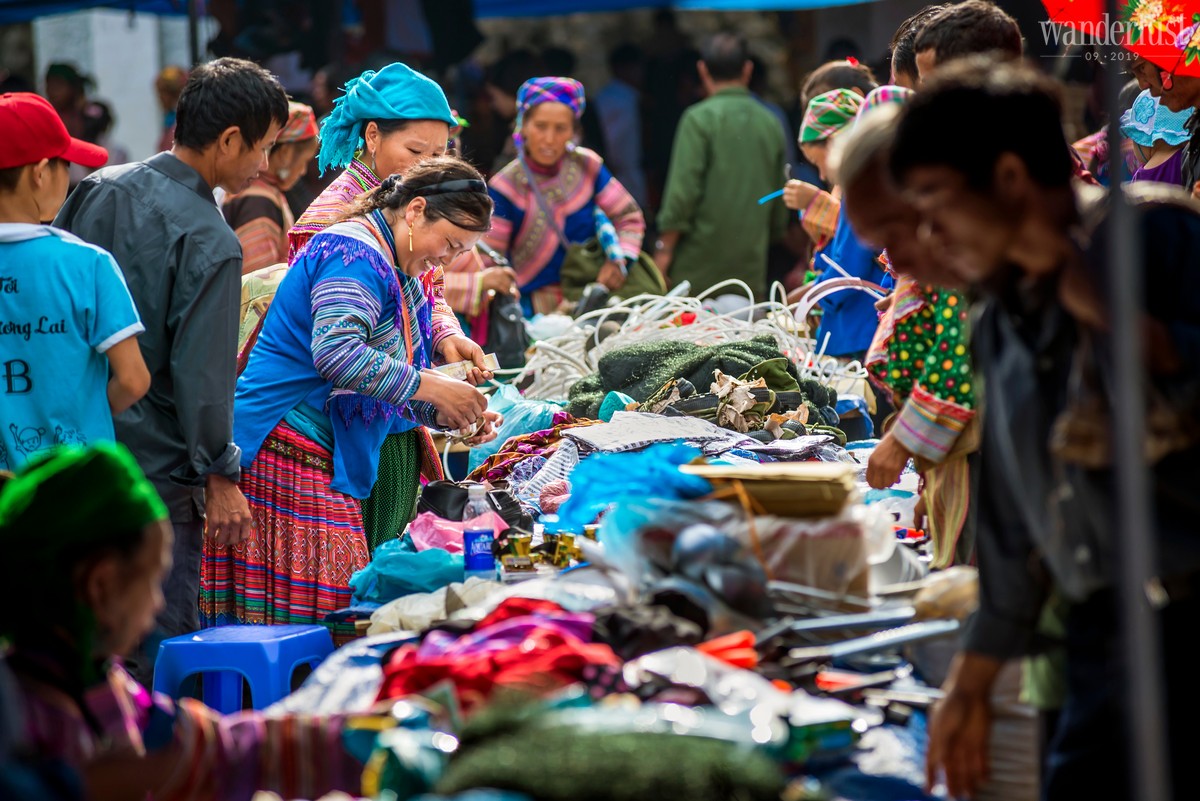
These days I go to school and work far away but every time I return home, I go to the market with my mother in the early morning, not only to help her carry things but also to relive some of those childhood memories. Every time I return from the market, I give my nephews some ambarella fruits or packs of sweet gruel. From their hopeful eyes, I feel nostalgia for my childhood.
Lan Anh | Wanderlust Tips


[…] is a key part of any trip. It typically embodies the great value of the country’s history and culture. The dishes listed below represent some of the must-try Southeast Asian […]
[…] in Vietnam. Its architectural style is an excellent blend of ancient Japanese and Vietnamese culture with Japanese-style wooden gates erected to guard the holy site. The pagoda is pretty unique as it […]